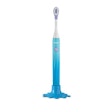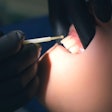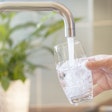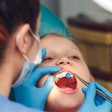
Pediatric dentists believe that the Isolite system is an effective tool that increases productivity and efficiency, according to two surveys presented during a poster session at the recent American Academy of Pediatric Dentistry (AAPD) annual session in San Diego.
The first study, a survey in which 875 of 4,392 AAPD members who were contacted responded, was conducted by researchers from the University of Texas (UT) Health Science Center at San Antonio. It sought to gauge perception of Isolite's effectiveness and acceptance, and the researchers concluded the following:
- The Isolite system is well-accepted by patients and dental assistants.
- The system can assist in increasing efficiency.
- It is an effective isolation alternative.
- The system is recommended by other pediatric dentists who currently use it.
The researchers also found an association between length of time used and increased productivity.
The second study, in which 761 of 4,780 active AAPD members responded to a survey relating to the Isolite system when placing dental sealants, was a collaboration between researchers at the Waianae Coast Comprehensive Health Center and the department of pediatric dentistry at Lutheran Medical Center. Partial funding was provided by Isolite, according to the authors' disclosures.
A majority of the respondents saw an improvement in the speed and efficiency in the completion times of sealant placing procedures after they began using the system, and they were more likely to use Isolite as the number of sealants they placed daily increased. The quality of the sealants placed increased as well, according to 59% of the respondents.
Familiarity and productivity
Both studies utilized a questionnaire facilitated by Survey Monkey, a service in which users can create Web-based surveys.
The UT Health Science study included 38 multiple-choice questions pertaining to the Isolite system while treating pediatric patients. Approximately 80% of respondents were familiar with the device, yet of this group only 39% said they were currently using it.
The survey also revealed a solid consensus about the device's impact on productivity: 85% thought they were more efficient with the device than without it. However, only 44% thought that they completed more treatment per appointment using the device.
Perceptions of Isolite's effectiveness varied depending on how long a practitioner had used it. "Not surprisingly, those using the Isolite system longer reported accomplishing more treatment per appointment, 49% (< 3 years), 54% (< 5 years), and 43% (> 5 years) compared to only 21% for dentists using less than a year (p < 0.001)," the UT Health Science researchers wrote.
Patients' responses to the device were not unfavorable. Of the dentists surveyed, 11% said patients tolerate the device with "no problem," while 77% do so with "minimal problem." Most dentists felt that their patients would prefer the device over a traditional rubber dam (63%).
Of the dentists who were not using the device, 41% said the start-up cost was too high, while 58% felt it was unnecessary. Interestingly, more than 90% of the dentists surveyed would recommend it to colleagues, the researchers noted.
Lack of exposure/training
The Waianae/Lutheran survey contained 20 questions pertaining to the use of the Isolite system when placing sealants: Five asked for demographic data, while the remainder focused on how practitioners are using the device. Among the respondents who do not use the device, 64% said that they did not have it in their practice because they have not tried it or been exposed to it.
Those who use the Isolite system had mostly positive reactions to questions about its effectiveness when placing sealants. It consistently helps to maintain a dry field, according to 74% of the respondents, while 67% said it improves their speed and efficiency during procedures, and 59% said it improves the quality of sealants placed. However, 52% said that it "has interfered with their successful completion of a sealant procedure."
A lack of training with the system in academic settings surfaced in both studies. In the Waianae/Lutheran study, the researchers stated that exposure to the system during residency training was seen to be low, regardless of the system. However, the researchers also noted that this was likely a result of its relatively short time on the market; in fact, 95% said the Isolite system was not available to them during their residency.
The UT Health Science Center study also found that an overwhelming number of dentists (91%) did not use the Isolite system during their training program.
The device does not eliminate the need for assistants, according to these studies. Roughly 50% of respondents in the UT Health study said that a need for intraoral assistance remains, while in the other study 34% said that assistance was unnecessary while placing sealants when using the device.



















